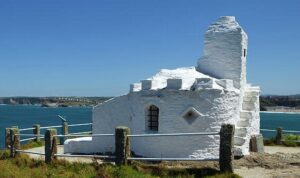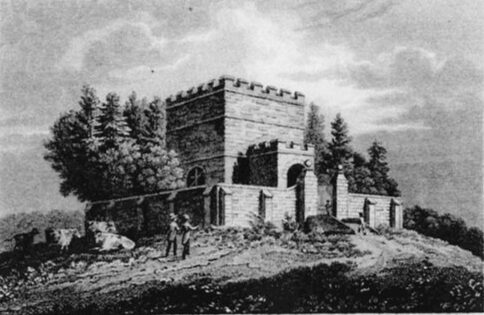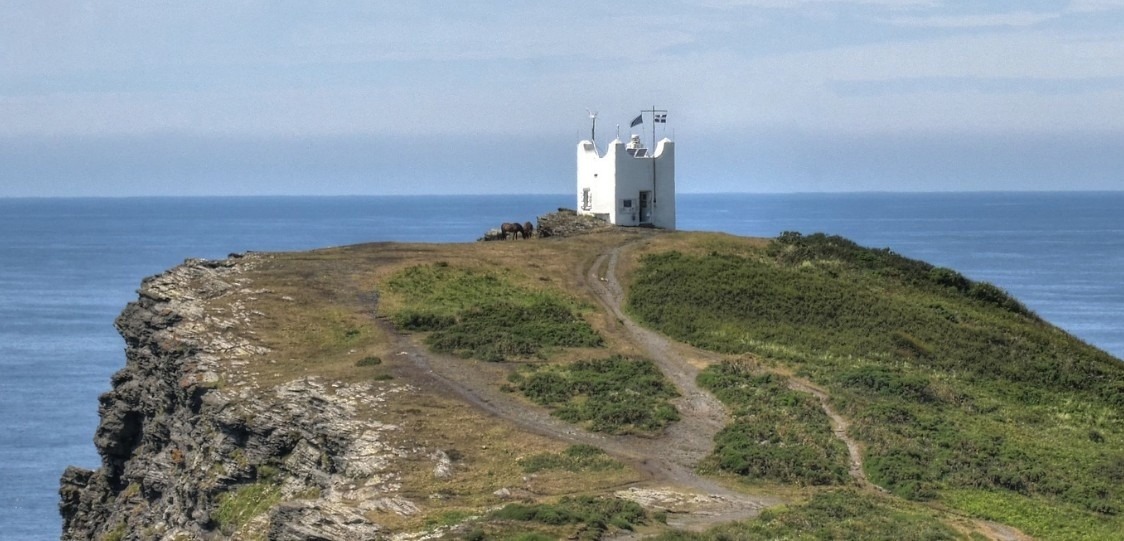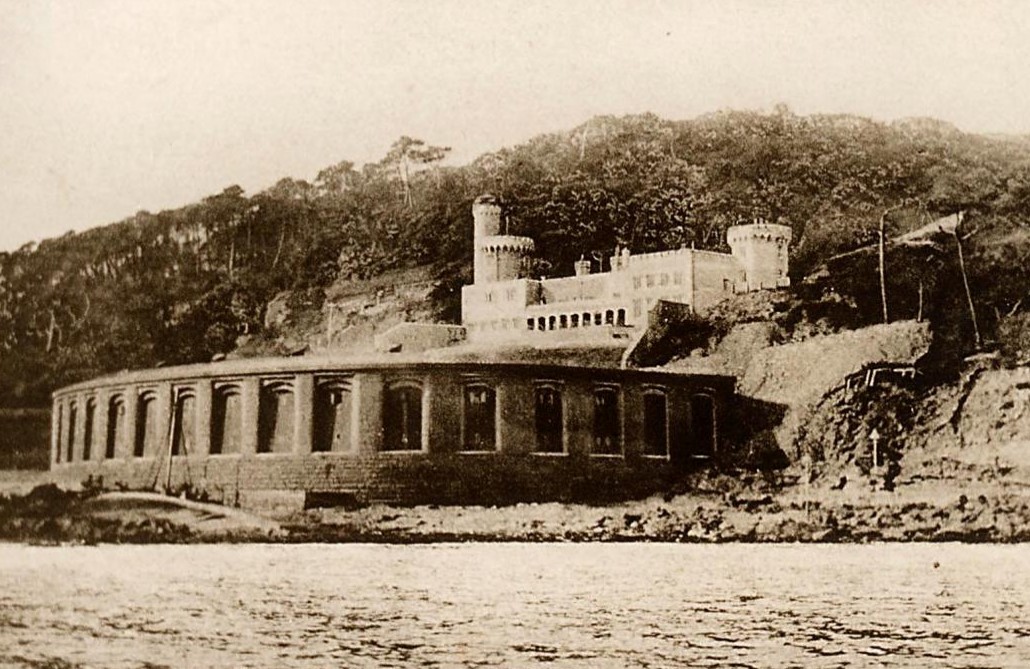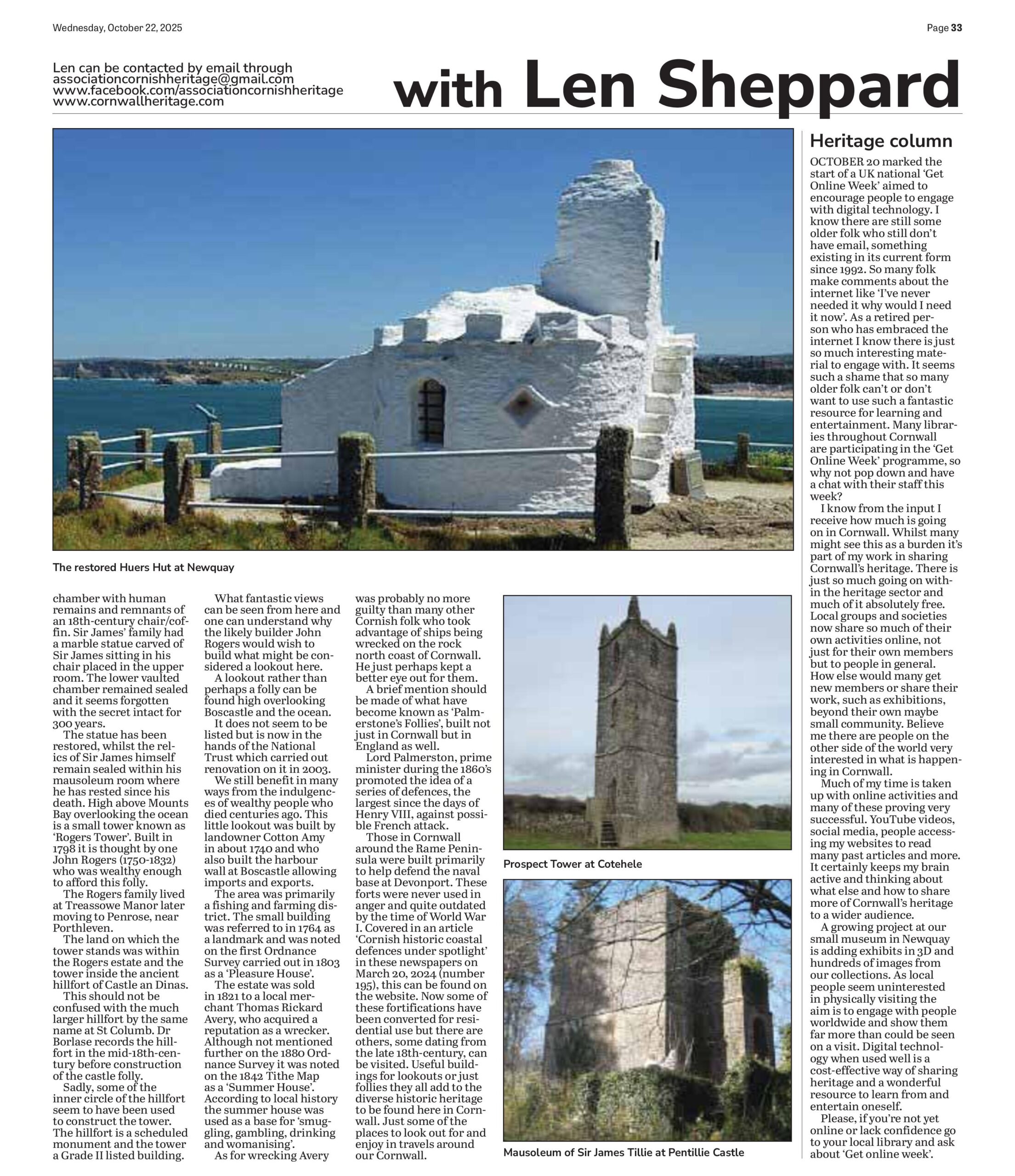Ertach Kernow - Cornish monuments, towers and follies
Cornish monuments range from the ancient, such as quoits, stone circles, standing stones and some we still don’t understand like fogou’s. More recent historical buildings and structures, some built just as a whim of a wealthy person or family continue to interest many of us. There are a number of these, what might be termed follies throughout Cornwall. There are also those which were built for good reasons but no longer applicable and have happily survived for us to enjoy today.
Fortunately we hear of unusual structures which local people have great affection for and have made great efforts to preserve. One such building is the ‘Storm Tower’ at Bude, which has an interesting and moving story. Known locally as ‘The Pepper Pot’ it was built for Sir Thomas Acland in 1835 as both an ornamental feature, a folly, also as a refuge for coastguard. Built as an octagonal tower it was described by its architect George Wightwick as ‘after the Temple of the Winds at Athens’. A recorded nearby flagpole used for signalling testifies to its purpose as a coastguard lookout.
Fast eroding cliffs during the second part of the 19th century forced the ‘Storm Tower’ to be dismantled and moved slightly further inland in 1881. The work was funded by Sir Thomas Dyke Acland the 11th Baronet, who succeeded his father in 1871. As much of the original building was reused in the reconstruction although there were of course slight alterations with a raised base provided to elevate the building for better viewing purposes. Into the early 20th century it continued to be used by the coastguard. Following discontinuance as a lookout it became an attraction for visitors. However, further cliff erosion put the building in danger and in 2022 it was once again dismantled and re-erected. Again as much of the previous stonework was used, with some additional strengthening of the base and replacement of stones which did not survive the process. On 26th March 2024 the official reopening of ‘The Storm Tower’ took place with some 500 people attending. A very patriotic Cornish affair it included speeches and the singing of ‘Cornwall my Home’ and of course ‘Trelawny’. Splann!
Thank you for reading the online version of the Ertach Kernow weekly articles. These take some 12 hours each week to research, write and then upload to the website, and is unpaid. It would be most appreciated if you would take just a couple of minutes to complete the online survey marking over five years of writing these weekly articles. Many thanks.
Click the link for survey: Ertach Kernow survey link
As always click the images for larger view
Newquay once had a historic circular coastguard building on The Beacon overlooking Newquay Bay. Sadly shortsighted people did not see the potential of such a building as a tourist attraction and it was built over as a base for an oversized War Memorial. Fortunately, the nearby Huers Hut has another story. After falling into disrepair a campaign to repair and maintain this unusual building was successful. Thought to date from medieval times and rebuilt in 1835 this historic building was used during the 19th century as an observation point for the men looking out for the schools of pilchards as they moved down the coast. The huers as they became known as would shout through a horn ‘hevva, hevva hevva’ to alert the seine fishermen to launch their boats and deploy their nets around the fish. Following the failure of the pilchard industry at the end of the 19th century the building became a local tourist attraction. Today revived to a fit state of repair it has become a site used by the local community as a backdrop for events and activities.
Many strange buildings and what we might term follies have come under the management of heritage organisations. We’re used to seeing towers either round, square or rectangular. At Cotehele on the estate managed by The National Trust is a three-sided tower. Tales of it being used for the Edgcumbe family as they watched the Armada sail up the Channel in 1588 may be fanciful, as it’s been dated to the late 18th century. Perhaps there was an earlier tower on the spot before this Grade II* structure was built. George III and Queen Charlotte visited the Edgcumbe Estates in 1789 dining at Mount Edgcumbe. Anecdotal stories say it was built for this occasion but highly unlikely. Although they visited Cotehele only the house was mentioned in the diary of Queen Charlotte.
Mentioned on Ordnance Survey maps as the ‘Tower’ it is now known as ‘Prospect Tower’ and lies some 400 yards north of Cotehele House. The first Ordnance Survey for this area was carried out from 1784 and published in 1809; there is no mention of the tower. Given no mention in Queen Charlottes diary and not included on the first Ordnance Survey or incidentally the Tithe Map of circa 1840 it would be interesting to find out when it was actually built. Why would the Edgcumbe family have built this when clearly their interest had moved from the medieval house at Cotehele to Mount Edgcumbe.
Besides the actual building some structures have other strange sometimes disturbing but interesting stories. One perhaps is that on the Pentillie Estate overlooking the River Tamar. Some six hundred metres from the main house built by Sir James Tillie in 1698 is a mausoleum, built by Sir James originally as a summerhouse. A burial room was later excavated below the floor.
On his death in 1713 he had arranged for himself to be dressed in his best clothes, bound to a stout chair and placed with his books, wine and pipe in his favourite folly on the estate, awaiting resurrection. Research and archaeological investigations have now uncovered the truth behind the legend. In 2013 work on the folly, or perhaps better mausoleum, discovered a hidden chamber with human remains and remnants of an 18th century chair/coffin. Sir James’ family had a marble statue carved of Sir James sitting in his chair placed in the upper room. The lower vaulted chamber remained sealed and it seems forgotten with the secret intact for 300 years. The statue has been restored, whilst the relics of Sir James himself remain sealed within his mausoleum room where he has rested since his death.
High above Mounts Bay overlooking the ocean is a small tower known as ‘Rogers Tower’. Built in 1798 it is thought by one John Rogers (1750-1832) who was wealthy enough to afford this folly. The Rogers family lived at Treassowe Manor later moving to Penrose, near Porthleven. The land on which the tower stands was within the Rogers estate and the tower inside the ancient hillfort of Castle an Dinas. This should not be confused with the much larger hillfort by the same name at St Columb. Dr Borlase records the hillfort in the mid-18th century before construction of the castle folly. Sadly, some of the inner circle of the hillfort seem to have been used to construct the tower. The hillfort is a scheduled monument and the tower a Grade II listed building. What fantastic views can be seen from here and one can understand why the likely builder John Rogers would wish to build what might be considered a lookout here.
A lookout rather than perhaps a folly can be found high overlooking Boscastle and the ocean. It does not seem to be listed but is now in the hands of the National Trust which carried out renovation on it in 2003. We still benefit in many ways from the indulgences of wealthy people who died centuries ago. This little lookout was built by landowner Cotton Amy in about 1740 and who also built the harbour wall at Boscastle allowing imports and exports. The area was primarily a fishing and farming district. The small building was referred to in 1764 as a landmark and was noted on the first Ordnance Survey carried out in 1803 as a ‘Pleasure House’. The estate was sold in 1821 to a local merchant Thomas Rickard Avery, who acquired a reputation as a wrecker. Although not mentioned further on the 1880 Ordnance Survey it was noted on the 1842 Tithe Map as a ‘Summer House’. According to local history the summer house was used as a base for ‘smuggling, gambling, drinking and womanising’. As for wrecking Avery was probably no more guilty than many other Cornish folk who took advantage of ships being wrecked on the rock north coast of Cornwall. He just perhaps kept a better eye out for them.
A brief mention should be made of what have become known as ‘Palmerstone’s Follies’, built not just in Cornwall but in England as well. Lord Palmerston, prime minister during the 1860’s promoted the idea of a series of defences, the largest since the days of Henry VIII, against possible French attack. Those in Cornwall around the Rame Peninsula were built primarily to help defend the naval base at Devonport. These forts were never used in anger and quite outdated by the time of World War I. Covered in an article ‘Cornish historic coastal defences under spotlight’ in these newspapers on 20th March 2024 (number 195), this can be found on the website. Now some of these fortifications have been converted for residential use but there are others, some dating from the late 18th century, can be visited.
Useful buildings for lookouts or just follies they all add to the diverse historic heritage to be found here in Cornwall. Just some of the places to look out for and enjoy in travels around our Cornwall.


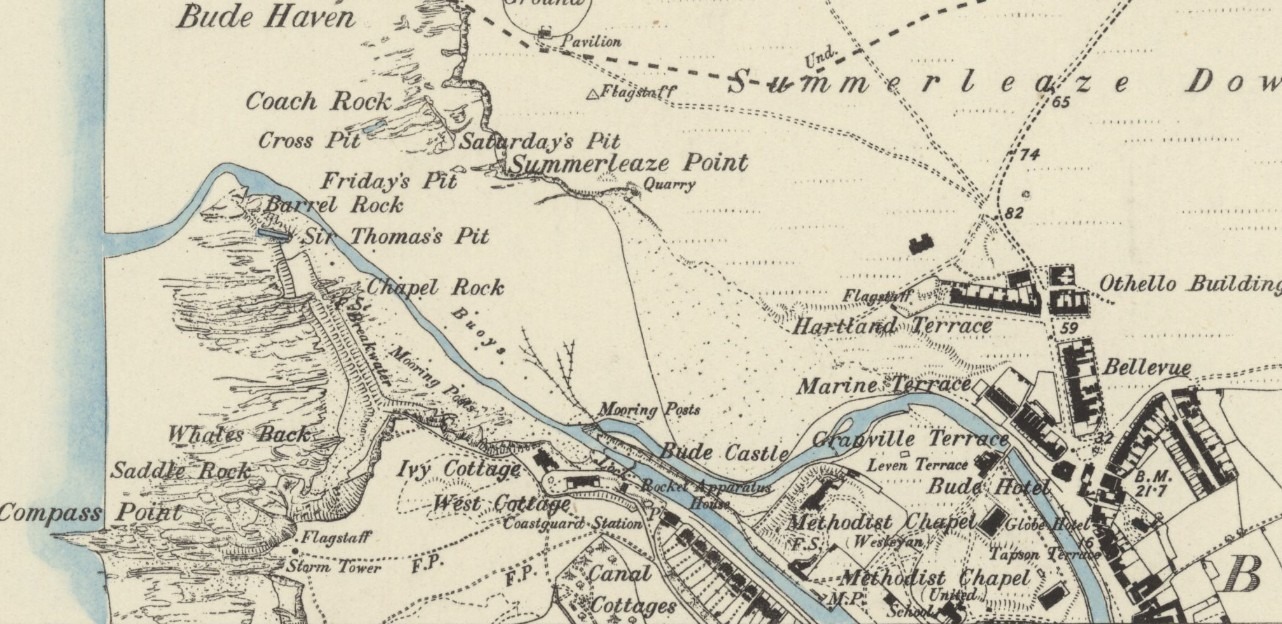

![Coastguard Lookout [ON 415] Old Coastguard Lookout, Newquay](https://www.cornwallheritage.com/wp-content/uploads/2021/05/Coastguard-Lookout-ON-415-300x292.jpg)
